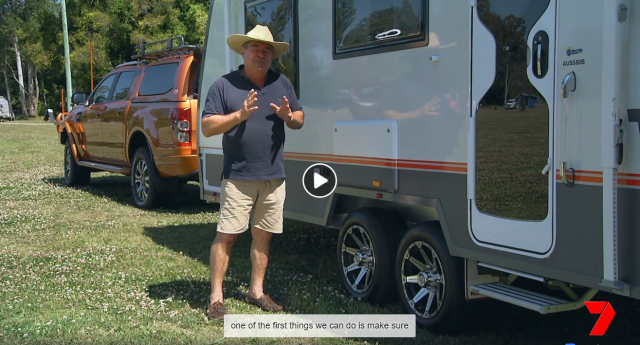Why wait for something to go wrong before teaching yourself the right and wrong moves for braking your caravan? Below, we Winnebago outline the steps to ensure that your caravans braking system will perform as expected, every time!
Brake wear and tear
Shoe wear and deterioration due to overheating, worn drum magnets, brake dust build-up – all of these issues affect braking performance. It’s essential to inspect these crucial elements on a regular basis to ensure optimal working condition.
Wheel bearings
The bearing is the key link between the wheel/brake assembly and the axle. Bearings can last anywhere between 10,000 and 50,000 kilometres, but should be replaced at the first sign of wear.
Tyres
Caravan brakes are only ever as good as the tyres that are fitted to the caravan. The greatest threats to their condition are wall damage and deterioration caused by lack of use, and damage caused by incorrect inflation. Perished and worn tyres should be replaced immediately.
Furthermore, a change in wheel make/size (where a change in tyre diameter occurs) may change your caravan’s braking requirements. As a rule of thumb, a 14-inch wheel requires 10-inch brakes, while a 16-inch wheel will require 12-inch brakes. Failing to comply with this will reduce your caravan’s capacity to brake effectively.
Correct weights
Safe, effective braking comes down to more than just maintenance – observing the weight rating of your caravan is of paramount importance. Your caravan’s manufacturer will specify an aggregate trailer mass (ATM), or the maximum mass that the uncoupled caravan is allowed to weigh when fully loaded. All of the components, including the brakes, are designed to work effectively up to the specified ATM and TBM. Exceeding these ratings compromises your safety.
Installing a caravan ESC system
While it may be unavoidable at times, swerving to miss an obstacle is never a great idea with a caravan. Any sudden change of direction of a heavy, articulated vehicle can be enough to push both tow vehicle and caravan beyond a point of return. Fitting a system such as the AL-KO ESC can eliminate any loss of control that an emergency manoeuvre could bring on, even at higher speeds and in the wet.
There’s more to safe braking than merely hitting the brake pedal. Ensuring your brakes and associated hardware are in tip top condition and observing correct weights add up to a caravan that will brake to the best of its ability.
Watch the Winnebago tips video above starring Roger Vickery from Creek to Coast to learn more!











